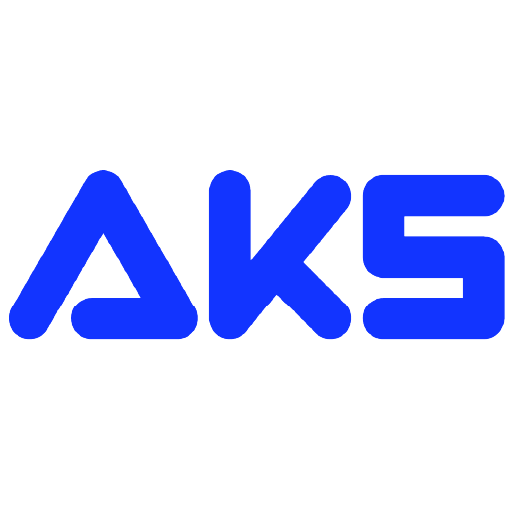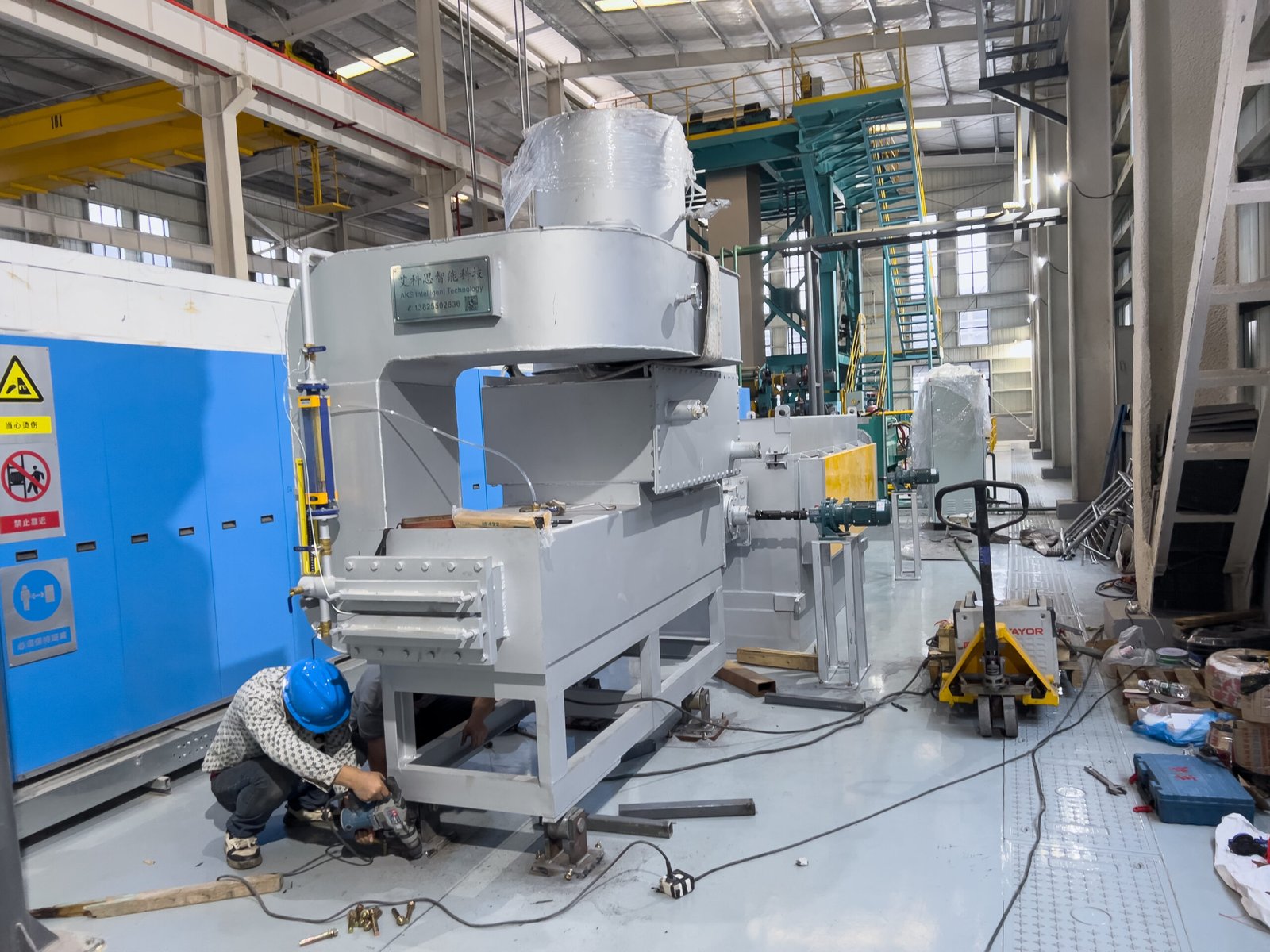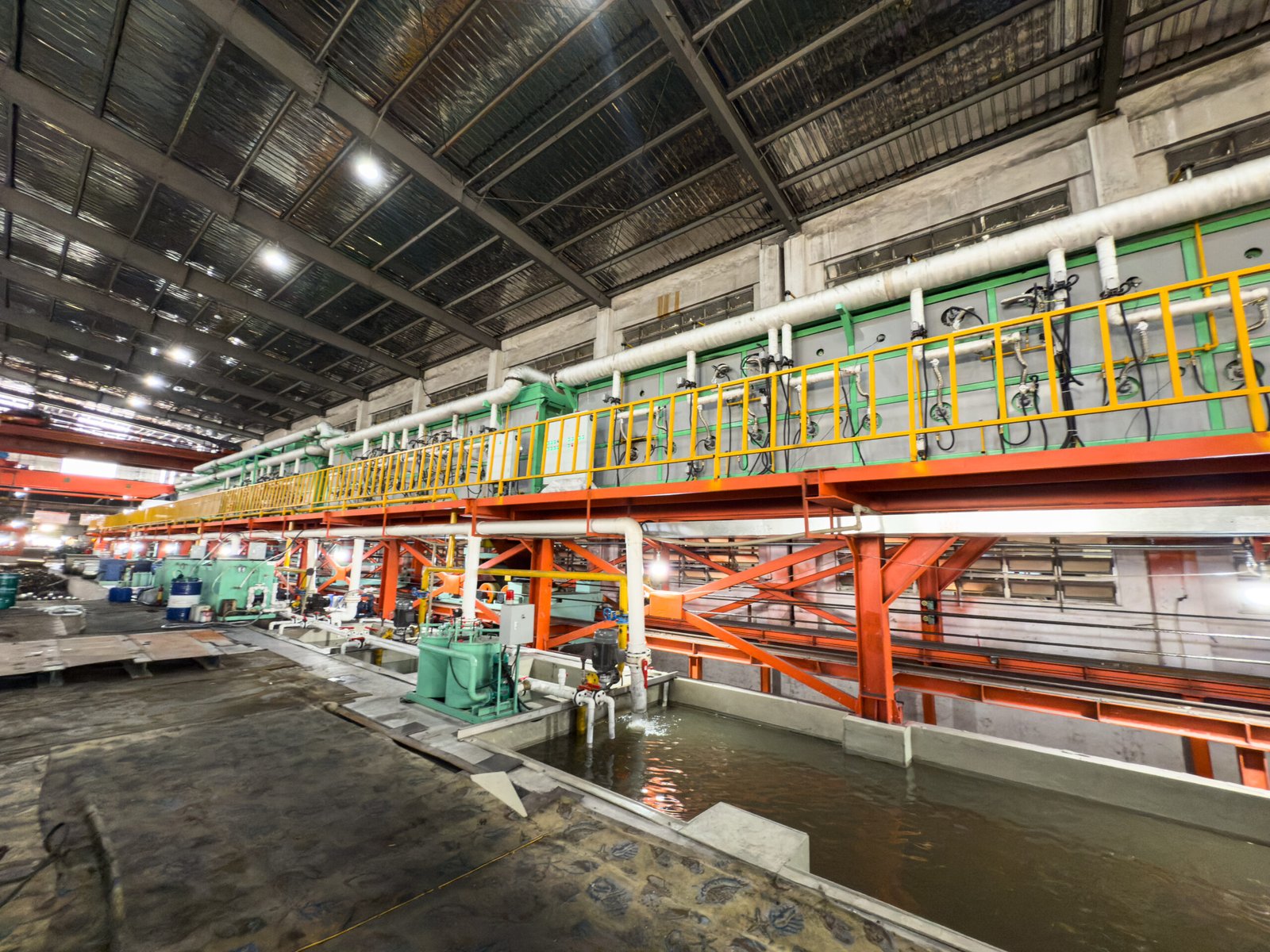How Does Bright Annealing Stainless Steel Simulation Software Shorten R&D Cycles?

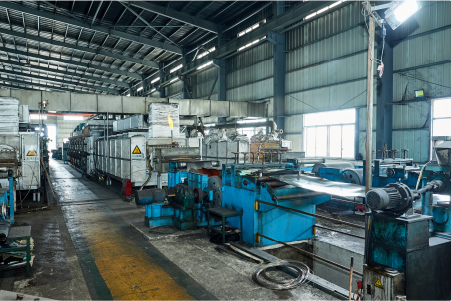
Struggling with the endless cycle of trial-and-error in stainless steel development? The costs of wasted materials, energy, and time quickly add up, delaying innovation and hurting your bottom line. Imagine being able to perfect your annealing process digitally before a single coil is heated.
Bright annealing simulation software shortens R&D cycles by creating a digital twin of the heat treatment process. This allows engineers to model, test, and validate furnace parameters, material properties, and atmospheric conditions computationally, drastically reducing the need for costly and time-consuming physical prototypes and trials.
This digital-first approach is no longer a futuristic concept; it's a competitive necessity. As markets demand more specialized stainless steel grades with unique properties, the ability to innovate quickly and cost-effectively separates industry leaders from the rest. In this article, I’ll share how leveraging simulation isn't just about software—it's about creating a synergistic system where digital precision is realized through high-performance equipment.
At AKS Furnace, we've seen firsthand how our clients are transforming their operations. The journey begins with understanding the limitations of traditional methods and embracing a new paradigm of digital R&D1. This shift allows for unprecedented control over final product quality, from metallurgical structure to surface finish. By pairing advanced simulation tools with furnaces engineered for precision, like our Bright Annealing lines, manufacturers can unlock new levels of efficiency and product performance, turning R&D from a cost center into a powerful growth engine.
What is bright annealing simulation software and its role in stainless steel processing?
Are you trying to achieve a perfect, mirror-like finish on stainless steel without surface oxidation? Traditional methods often lead to inconsistent results and rework. Simulation software gives you a predictive window into the furnace2, allowing you to master the delicate balance of heat and atmosphere digitally.
Bright annealing simulation software is a computational tool used to model the thermal and metallurgical processes within a furnace. Its primary role is to predict how different parameters—like temperature, time, and gas atmosphere—will affect the final properties and surface quality of stainless steel, ensuring a bright, oxide-free finish.
The core value of this technology lies in its ability to de-risk the complex process of bright annealing. In my experience, achieving that perfect bright finish is a delicate dance between thermodynamics and material science. It’s not just about heating and cooling; it’s about controlling the environment with extreme precision. When a client in the automotive components sector needs to produce exhaust parts with flawless surfaces to prevent corrosion, they can't afford guesswork. Simulation allows them to define the exact dew point and hydrogen-nitrogen ratio required before the actual production run begins. This predictive power is transformative, but it hinges on one crucial factor: the physical furnace must be able to execute the simulated parameters with unerring accuracy. The software provides the blueprint for success, but a high-performance furnace, like those we build at AKS, is the tool that brings that blueprint to life, ensuring the digitally-proven process translates into tangible, high-quality products. This synergy between the digital twin and the physical equipment is where true operational excellence is born.
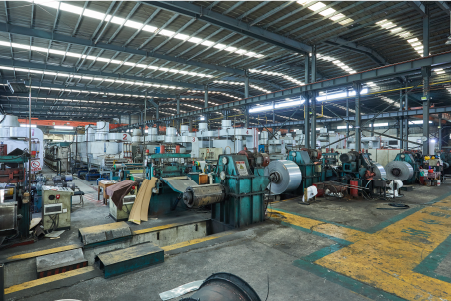
The Digital Twin: Modeling Thermal and Metallurgical Transformations
At its heart, bright annealing simulation software operates as a sophisticated "digital twin" of the heat treatment process. It utilizes Finite Element Analysis (FEA) and other computational models to simulate the intricate interplay of heat transfer, phase transformation, and microstructural evolution within the stainless steel as it moves through the furnace. The process begins with defining the initial state of the material, including its chemical composition, initial grain size, and cold-worked condition. Engineers then input the proposed furnace parameters: heating ramp rates, soaking temperatures, holding times, and, critically, the cooling curve.
The software then solves complex differential equations to predict how the temperature will distribute throughout the material—be it a thin strip or a wire. This thermal profile is the foundation for all subsequent predictions. As the simulated temperature changes, the software models the recrystallization and grain growth, which are fundamental to achieving the desired softness and formability. For austenitic stainless steels like 304, the simulation can predict the dissolution of carbides and the final grain structure, which directly impacts both mechanical strength and corrosion resistance. The output isn't just a simple pass/fail; it provides detailed visual maps of stress distribution, hardness gradients, and predicted grain sizes across the material's cross-section.
This level of detail is invaluable. For example, a manufacturer of precision electronic connectors from stainless steel foil needs to ensure absolute uniformity in ductility to prevent cracking during stamping. Using simulation, they can test dozens of annealing cycles virtually in a single afternoon, identifying a process window that is mere degrees wide. This digital precision work prevents the creation of tons of expensive scrap material that would have resulted from physical trials, providing a clear and immediate return on investment.
Simulating the Protective Atmosphere for a Flawless Finish
The "bright" in bright annealing is arguably the most critical—and challenging—aspect to achieve. It refers to maintaining the steel's shiny, metallic luster by completely preventing surface oxidation during the high-temperature cycle. Simulation software plays a pivotal role here by modeling the furnace's protective atmosphere, which is typically a blend of hydrogen ($H_2$) and nitrogen ($N_2$) or cracked ammonia. The key parameter is the dew point of the gas, which represents its moisture content. Even trace amounts of oxygen or water vapor at high temperatures will cause chromium oxide to form, dulling the surface.
The simulation models the chemical kinetics at the steel's surface. It calculates the oxygen partial pressure required to prevent the oxidation of chromium and iron at a given temperature, based on the specific composition of the stainless steel grade. Engineers can digitally experiment with different gas compositions and flow rates to determine the most efficient and cost-effective atmosphere. For instance, increasing the hydrogen content improves the reducing potential of the atmosphere but also increases operational costs and safety considerations. The simulation can help find the optimal balance—the minimum hydrogen percentage and dew point needed to guarantee a bright surface without unnecessary expense.
This is where the connection between simulation and equipment becomes undeniable. A perfect simulation is useless if the furnace itself cannot maintain the specified conditions. At AKS, our bright annealing furnaces are designed with superior gas-tight integrity and advanced atmosphere control systems. We focus on features like multi-zone temperature uniformity and precise gas ratio control to ensure that the dew point specified in the simulation is the dew point achieved in reality. A client producing high-end kitchenware, for whom aesthetics are paramount, used simulation to define an aggressive cooling cycle to achieve a specific hardness. Their success depended entirely on our furnace's ability to circulate the protective atmosphere rapidly during the cooling phase without introducing any contaminants, proving that digital plans require robust physical execution.
Quantifying the Impact: A Comparative Case Study
To illustrate the tangible benefits, let's consider a typical client of ours, a medium-sized stainless steel strip processor in India whom we'll call "Indo-Steel." They received a large order to produce a specialized 430-grade ferritic stainless steel for an automotive trim application, which required a specific combination of brightness (reflectivity) and ductility (formability). Their traditional R&D process was purely empirical.
Their old method involved adjusting their aging furnace settings based on experience, running a 2-ton test coil, and then sending samples to the lab for analysis. Each trial took approximately 24 hours (including furnace setup, run time, cooling, and testing) and cost them nearly $3,500 in material, energy, and labor. On average, it took them five such trials to get close to the customer's specification, often still requiring compromises. After adopting simulation software alongside a planned upgrade to a new AKS furnace, their process was transformed. The software allowed their engineers to run over 30 virtual iterations in two days, pinpointing the ideal temperature profile and atmosphere composition.
They then conducted a single 2-ton validation trial based on the simulation's recommendations. The result was a resounding success, meeting the client's specifications on the first attempt. The quantifiable impact was staggering. This new, integrated approach not only secured the contract but also positioned them as a high-tech, reliable supplier in a competitive market. The synergy between advanced simulation and a furnace capable of executing the precise parameters—with features like waste heat recovery further reducing the cost of the single run—was the key to their transformation.
| Metric | Traditional R&D (Per Project) | Simulation-Driven R&D (Per Project) | Improvement |
|---|---|---|---|
| Number of Physical Trials | 5 - 7 | 1 (Validation) | 80-85% Reduction |
| Total R&D Time | 7 - 10 Days | 2 Days | ~75% Reduction |
| Material Waste (Scrap) | ~10 Tons | ~2 Tons | 80% Reduction |
| Estimated R&D Cost | ~$25,000 | ~$5,000 | 80% Reduction |
| First-Time-Right Rate | ~15% | >90% | >6x Improvement |
Simulation reduces physical trialsTrue
Bright annealing simulation software allows engineers to test parameters digitally, drastically reducing the need for physical prototypes.
Simulation alone guarantees perfect resultsFalse
While simulation provides accurate predictions, the physical furnace must precisely execute the parameters to achieve desired results.
How has stainless steel R&D traditionally been conducted, and what are its limitations?
Relying on old-school, trial-and-error methods for stainless steel development? This approach is a gamble, leading to inconsistent quality, unpredictable timelines, and significant material waste. It's a reactive process in an industry that demands proactive innovation to stay competitive and profitable.
Traditionally, stainless steel R&D has been conducted through an empirical, iterative process of physical trials. This involves creating small production batches with varied parameters, followed by extensive laboratory testing, a method plagued by high costs, long lead times, and limited understanding of process variables.
This reliance on "educated guesses" and iterative physical testing has long been the industry standard, but its shortcomings are becoming increasingly apparent in today's fast-paced market. I remember visiting a potential client, a family-owned business specializing in carbon steel strip, who wanted to expand into the more lucrative stainless steel market. Their workshop was filled with racks of failed test coils, each representing thousands of dollars in lost material and energy. Their engineers, though experienced, were essentially navigating blind, making small adjustments to temperature or line speed and hoping for the best. This approach not only inflates R&D budgets but also stifles innovation. The risk associated with exploring truly novel alloys or properties is often too high, forcing manufacturers to stick to what they know. This is a significant competitive disadvantage when rivals are able to introduce new, higher-margin products to the market faster. The traditional method fundamentally lacks predictive power, making it incredibly difficult to scale or replicate results consistently, especially when transferring a process from a pilot line to full-scale production.
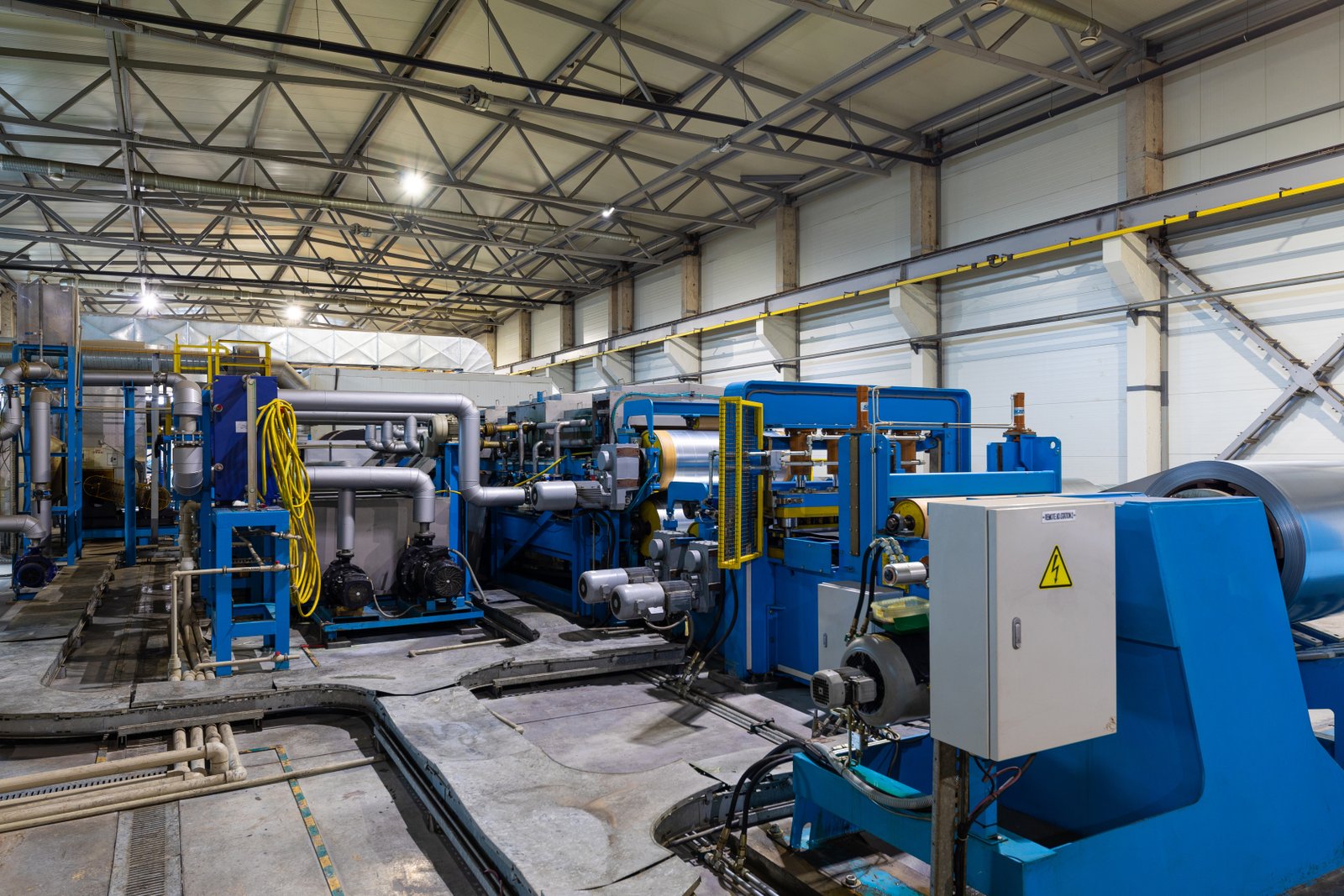
The Empirical Loop: Trial, Error, and High Costs
The traditional methodology for stainless steel R&D is a classic empirical loop. It begins with a hypothesis, usually based on an engineer's experience or historical production data. For instance, to develop a stainless steel grade with higher tensile strength, an engineer might theorize that a slightly faster cooling rate after annealing could achieve the desired result. This hypothesis is then tested by producing a physical sample[^3], often a coil weighing several tons, which consumes significant resources including raw materials, energy for the furnace, and labor.
Once the trial run is complete, the coil is subjected to a battery of destructive and non-destructive tests. Samples are cut and taken to a metallurgical lab for analysis of hardness, tensile strength, grain size, and surface quality. This testing phase itself can be time-consuming, taking hours or even days to yield results. More often than not, the initial trial fails to meet all the required specifications. Perhaps the strength is adequate, but the surface finish is poor, or the ductility is compromised. The engineering team then analyzes the results, formulates a new hypothesis—perhaps adjusting the soaking time or the atmospheric composition—and initiates another costly trial.
This iterative cycle of "tweak-and-test" continues until a satisfactory result is achieved, or until the R&D budget is exhausted. The process is inherently inefficient, with some industry studies suggesting that for every successful new product, the R&D phase can generate scrap material equivalent to 10-15% of the project's initial production volume. This not only represents a direct financial loss but also carries a significant environmental footprint due to wasted energy and materials. The entire approach is reactive, relying on analyzing past failures rather than proactively designing for success.
The Invisibility of Root Causes and Process Variables
A major limitation of the traditional approach is its inability to provide deep insight into the root causes of failure. When a trial run yields a product with inconsistent hardness across its width, is the root cause a non-uniform temperature in the furnace, an inconsistent cooling rate, or fluctuations in the protective atmosphere? The physical end-product offers limited clues, making troubleshooting a frustrating exercise in guesswork. Engineers are often forced to address symptoms rather than the underlying problems.
This "black box" nature of the furnace means that complex interactions between variables are almost impossible to isolate and understand. For example, the relationship between heating rate, soaking temperature, and the final grain structure is highly non-linear. A small change in one parameter can have an unexpectedly large impact on the final properties. Without simulation, it is virtually impossible to decouple these effects. An engineer might attribute a failed batch to the wrong temperature, when the real culprit was an unstable dew point in the furnace atmosphere for a brief period during the cycle.
This lack of understanding prevents true process optimization. Companies may find a set of parameters that "work" for a specific product, but they lack the fundamental knowledge to adapt that process to new materials or customer requirements without starting the entire trial-and-error cycle from scratch. We at AKS[^4] often encounter clients who have run the same production line for years but struggle to explain why their specific settings are effective. This knowledge gap is a significant business risk, as it makes them vulnerable to changes in raw material suppliers or equipment aging, which can inexplicably alter their "magic formula."
Scalability and Reproducibility Challenges
One of the most significant hurdles in traditional R&D is the challenge of scaling up from a pilot line or lab-scale experiment[^5] to full-scale production. A process that works perfectly on a small test furnace may fail spectacularly on a larger, industrial-scale bright annealing line. The thermal dynamics are completely different; a 20-ton coil heats and cools much differently than a 20-kilogram sample. The core of the larger coil will experience a very different thermal history than its surface, leading to variations in microstructure and mechanical properties.
This scalability problem leads to immense uncertainty and risk during the production ramp-up phase. The first few production runs on the main line often become part of the R&D process itself, leading to significant initial scrap rates and delayed deliveries to customers. I worked with a manufacturer of stainless steel wire for the medical industry where consistency is a matter of life and death. They had perfected a process on their pilot line, but when they moved to their main production furnace, they couldn't replicate the results, facing issues with surface impurities that were unacceptable for medical applications.
Furthermore, reproducibility even on the same equipment can be a challenge. Minor, unmonitored fluctuations in ambient temperature, gas supply pressure, or even the condition of the furnace insulation can lead to batch-to-batch variations. Without a deep, physics-based understanding of the process—the kind that simulation provides—it's impossible to build a truly robust and reproducible manufacturing operation. The traditional method produces a process that is fragile, susceptible to disruption, and difficult to transfer to other plants or production lines, thereby limiting a company's operational flexibility and growth potential.
Traditional R&D relies on physical trialsTrue
The text explicitly states stainless steel R&D involves creating small production batches with varied parameters for testing.
Physical trials provide root cause analysisFalse
The text explains traditional methods offer limited insight into root causes, making troubleshooting guesswork.
What challenges do manufacturers face in stainless steel development without simulation tools?
Are high R&D overheads and unpredictable project timelines eroding your profitability? Without predictive tools, manufacturers are essentially flying blind, facing immense pressure to innovate while grappling with soaring costs, material waste, and the constant risk of failing to meet stringent customer specifications on time.
Without simulation tools, manufacturers face significant challenges including spiraling R&D costs, extended time-to-market for new products, inconsistent product quality, and difficulty in troubleshooting production issues. This leads to reduced competitiveness, lower profit margins, and an inability to innovate effectively in a demanding market.
These challenges create a cycle of inefficiency that can be difficult to break. I've spoken with countless plant managers who feel trapped between the demands of the sales team for new, innovative products and the operational realities of their traditional R&D process. They are asked to produce stronger, more corrosion-resistant, or more formable steel grades[^6], but are given limited resources to do so. Every failed physical trial is not just a line item on a budget sheet; it's a delay that could mean losing a contract to a more agile competitor. This pressure often leads to conservative decision-making, where risky but potentially revolutionary ideas are shelved in favor of minor, incremental improvements. The inability to precisely diagnose production problems—like subtle surface defects or inconsistent mechanical properties—means that valuable resources are spent on reactive maintenance and quality control rather than proactive development. This reactive stance is unsustainable in an industry where customers increasingly expect perfection and rapid delivery.

The Economic Burden of Physical Prototyping
In the absence of simulation, the primary tool for R&D is the physical prototype, and this tool is exceptionally expensive. The costs extend far beyond the raw materials for the test coil. Each trial consumes a tremendous amount of energy, as industrial furnaces must be brought to temperatures exceeding 1000°C. Furthermore, it requires the allocation of valuable production time on equipment that could otherwise be used for revenue-generating activities. A single R&D trial can effectively shut down a production line for a full shift or more.
The labor costs are also substantial. Engineers, metallurgists, furnace operators, and quality control technicians must all dedicate their time to overseeing the trial and analyzing the results. When multiple iterations are required, these costs multiply rapidly, turning R&D into a significant financial drain. Consider a typical project aimed at developing a new stainless steel grade for the white goods industry[^7]. Industry data suggests that such a project, using traditional methods, might require anywhere from 4 to 10 full-scale trials. If each trial costs between $5,000 and $10,000, the total R&D cost can quickly escalate to $20,000-$100,000 before a single production part is sold.
This economic burden creates a high barrier to entry for innovation. Smaller companies may be unable to afford the risk, while even large corporations become risk-averse, hesitant to invest in developing next-generation materials. The result is market stagnation, where manufacturers are forced to compete primarily on price for existing commodity products, rather than creating value through technological advancement. This financial strain directly impacts a company's ability to invest in other critical areas, such as upgrading equipment like their annealing furnaces[^8], creating a vicious cycle of technological lag.
Inconsistent Quality and Brand Reputation Risk
Perhaps one of the most insidious challenges of operating without simulation is the struggle to maintain consistent product quality. Without a predictive understanding of how process variables interact, manufacturers often grapple with unexplained batch-to-batch variations. A product that met all specifications last week may suddenly exhibit issues with surface blemishes or fail mechanical tests this week, with no obvious change in the production settings.
This inconsistency poses a direct threat to a company's brand reputation and customer relationships. For our target clients in sectors like automotive parts or electronics hardware, quality is not negotiable. A shipment of stainless steel components that fail to meet tolerances can shut down their customer's entire assembly line, leading to severe financial penalties and a loss of trust that is difficult to regain. The manufacturer is then forced into a reactive mode, implementing costly 100% inspection protocols and firefighting quality issues, which further erodes profitability.
I recall a case involving a producer of stainless steel tubing for heat exchangers. They faced intermittent issues with delayed cracking, where the tubes would fail days after being shipped. Without simulation, they spent months investigating, blaming everything from raw material batches to lubrication issues. The root cause—subtle residual stresses introduced by a non-optimized cooling profile in their annealing furnace—was invisible to them. This single quality issue cost them a major contract and tarnished their reputation in the market. Such incidents are not isolated; they are the predictable outcome of a manufacturing process that lacks predictive control.
Competitive Disadvantage and Slowed Innovation
Ultimately, the lack of simulation tools places a manufacturer at a severe competitive disadvantage. In a global marketplace, time-to-market is a critical performance indicator. Competitors who leverage simulation can move from concept to commercial production in a fraction of the time. While one company spends six months and conducts eight physical trials to develop a new product, a simulation-enabled competitor can achieve a better result in six weeks with a single validation trial.
This speed advantage allows agile competitors to respond more quickly to emerging market trends and customer requests for customized solutions. They can bid more confidently on complex projects, knowing they have the tools to de-risk the development process. For example, in the rapidly growing market for lightweight, high-strength stainless steels[^9] for the aerospace and automotive industries, the ability to rapidly iterate and optimize material properties is paramount. Companies stuck in the traditional R&D paradigm are effectively locked out of these high-margin opportunities.
This leads to a long-term erosion of market share and profitability. The company becomes known as a follower, not a leader; a producer of standard goods, not an innovator. The talent within the organization, particularly skilled engineers and metallurgists, may become frustrated with the limitations of the trial-and-error approach and seek opportunities at more forward-thinking companies. Without the ability to innovate efficiently, the company's growth stagnates, and it becomes increasingly vulnerable to market disruptions and price wars.
Physical prototyping increases R&D costsTrue
Physical trials require expensive materials, energy, and labor, making them significantly more costly than simulation-based approaches.
Simulation eliminates all physical trialsFalse
While simulation reduces the number of physical trials needed, at least one validation trial is typically still required for final verification.
How does simulation software address these challenges in R&D processes?
Feeling stuck with the high costs and slow pace of traditional R&D? These outdated methods drain resources and put you behind competitors. Simulation software flips the script, allowing you to innovate faster and more cost-effectively by testing ideas in a virtual environment first.
Simulation software directly addresses traditional R&D challenges by enabling rapid, low-cost virtual experimentation. It provides deep process insights, predicts quality outcomes, and de-risks the entire development cycle, leading to dramatically shorter timelines, reduced costs, and more consistent, innovative products.
By creating a digital twin of the annealing line[^10], simulation liberates engineers from the constraints of physical testing. Imagine being able to test twenty different heating profiles in a single day without consuming a single kilowatt of energy or an ounce of material. That's the power simulation brings to the table. It transforms the R&D process from a linear, costly sequence of physical trials into a parallel, dynamic exploration of possibilities. A client of ours in the stainless steel wire industry used simulation to solve a recurring issue with wire breaks during drawing. The software identified that non-uniform cooling was creating brittle spots. By modeling a new cooling configuration, they developed a solution digitally. When they implemented this on their AKS furnace, which has an advanced cooling system designed for such precision, the problem was eliminated. This is a perfect example of how simulation provides the "what" and "why," while advanced hardware provides the "how," turning digital insights into real-world results.
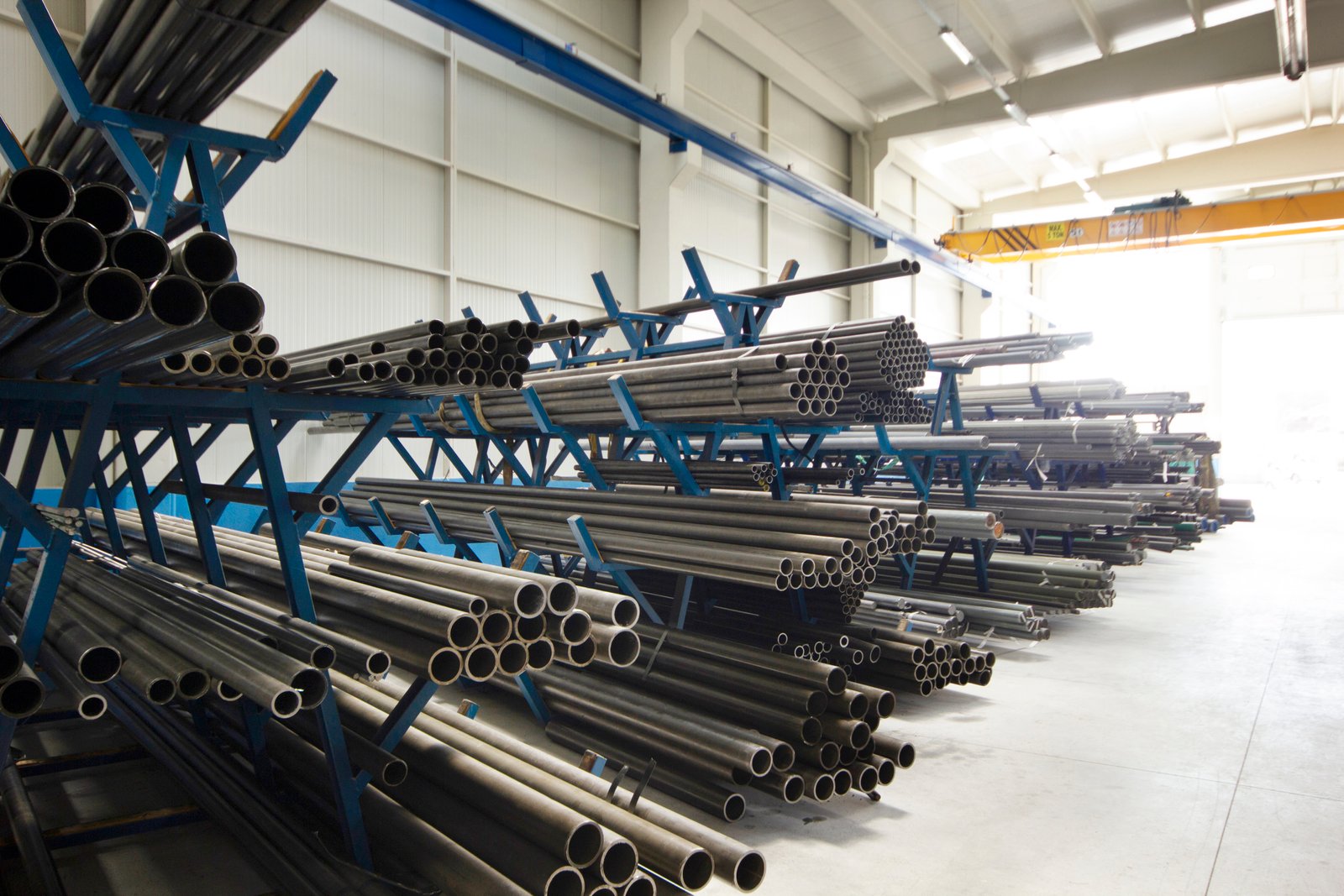
Front-Loading R&D: The Power of Virtual Experimentation
The most profound impact of simulation software is its ability to "front-load" the R&D process. This means that the bulk of experimentation, discovery, and optimization occurs in the digital realm, at the very beginning of the project lifecycle, rather than through costly physical trials later on. Engineers can build a virtual model of their bright annealing furnace and the specific stainless steel grade they are working with. They can then run hundreds or even thousands of simulated experiments in the time it would take to prepare for a single physical test.
This virtual sandbox allows for an unprecedented breadth of exploration. An engineer can systematically investigate the effect of every conceivable variable: How does a 5% increase in hydrogen in the atmosphere affect surface brightness? What is the impact of a 10°C/second faster cooling rate on grain size and hardness? What is the absolute highest line speed possible before temperature uniformity is compromised? Answering these questions through physical trials would be prohibitively expensive and time-consuming. Simulation provides these answers quickly and at a negligible marginal cost per run.
This capability fundamentally de-risks innovation. Ideas that might be considered too radical or risky for physical testing can be safely explored in the virtual environment. This fosters a culture of creativity and allows companies to pursue breakthrough innovations rather than settling for safe, incremental improvements. For example, a manufacturer could use simulation to explore the feasibility of annealing a completely new, exotic alloy for a high-tech application. The software would quickly indicate whether their existing furnace is even capable of processing the material, saving them from a potentially disastrous and expensive physical trial. Research from industry analysts like CIMdata has consistently shown that companies adopting a simulation-led design process can reduce their R&D costs by over 50% and shorten project timelines by 60-70%.
From "Black Box" to Transparent Process: Gaining Deep Insights
Simulation software transforms the annealing furnace from an opaque "black box" into a transparent, understandable system. Instead of only seeing the inputs (furnace settings) and the final outputs (the properties of the finished coil), engineers can visualize what is happening inside the furnace and within the steel itself at every moment of the process. This provides invaluable diagnostic and troubleshooting capabilities.
If a physical trial results in a defect, such as surface discoloration, simulation can help pinpoint the exact cause. By replicating the production parameters in the software, an engineer might discover that a brief temperature overshoot in one zone of the furnace caused localized oxidation, or that the gas flow rate was insufficient to maintain the required low dew point during the initial heating ramp. This ability to visualize temperature gradients, stress distributions, and microstructural changes across the material's cross-section provides the deep process understanding that is impossible to gain from physical inspection alone.
This insight is crucial for process optimization. At AKS, we design our furnaces with features like multi-zone heating and advanced cooling systems for maximum control. Simulation software allows our clients to take full advantage of this precision. They can use the software to design a complex, non-linear temperature profile that maximizes throughput while achieving specific metallurgical properties in different sections of the material. A client producing architectural stainless steel panels, for example, used simulation to create a custom annealing cycle that produced a unique, highly formable material with a very specific surface texture, something that would have been impossible to develop through guesswork. This deep understanding turns manufacturing into a science, enabling continuous improvement and robust process control.
Ensuring Quality and Consistency by Design
By using simulation, manufacturers shift from a quality control (QC) paradigm to a quality assurance (QA) or "quality by design" model. Instead of inspecting for defects at the end of the process and scrapping failed products, they use simulation to design a process that is inherently robust and less susceptible to minor variations, ensuring quality is built-in from the start. The software can be used to perform sensitivity analyses and statistical "Design of Experiments" (DoE) to identify which process parameters have the most significant impact on final product quality.
This allows engineers to define optimal process windows. They can determine the acceptable range for key variables like temperature, line speed, and gas composition. By understanding these boundaries, they can set up their production controls to ensure the process always stays within the "safe" zone, dramatically increasing the first-time-right rate. This proactive approach leads to a significant reduction in scrap, rework, and customer complaints, directly boosting the bottom line.
This consistency is a major selling point. When our clients can show their customers—say, a major automotive OEM—simulation data that validates their process and demonstrates its robustness, it builds immense confidence. They are no longer just selling a product; they are selling a guarantee of quality and consistency backed by scientific data. This capability is a powerful competitive differentiator. It enables them to meet and exceed the increasingly stringent quality standards of high-end industries, securing their position as a preferred supplier and enabling them to command higher margins for their products. The synergy is clear: simulation designs the robust process, and a high-performance furnace like an AKS model reliably executes it every time.
Simulation reduces R&D costsTrue
Simulation software enables virtual testing, eliminating the need for expensive physical prototypes and materials.
Physical testing is faster than simulationFalse
Simulation allows for hundreds of virtual experiments to be run in the time it takes to prepare for a single physical test.
What strategies can companies employ to maximize the benefits of simulation software in R&D?
Just buying simulation software isn't enough to guarantee results. Without the right strategy, it can become an underutilized tool. To truly transform your R&D, you must integrate simulation deeply into your workflow, empower your team, and align it with your physical production capabilities.
To maximize benefits, companies must integrate simulation software into the core R&D workflow, not treat it as an isolated tool. This involves investing in training, validating digital models with physical data, and fostering collaboration between simulation analysts and furnace operators to ensure virtual insights translate into real-world success.
The most successful implementations I've seen treat simulation as a cornerstone of their product development culture. It starts with a commitment from leadership to move away from a purely trial-and-error mindset. This involves creating a feedback loop where simulation results guide physical trials, and the data from those trials is then used to refine and improve the accuracy of the simulation models. For instance, when a client commissions a new AKS bright annealing line[^11], we encourage them to use the initial setup and calibration runs as an opportunity to build a highly accurate digital twin of their specific furnace. This validated model then becomes an incredibly powerful asset. It allows their engineers to confidently develop new products and optimize existing ones, knowing that the simulated results will closely match reality. This strategic alignment between the digital and physical worlds is where the true competitive advantage is unlocked.
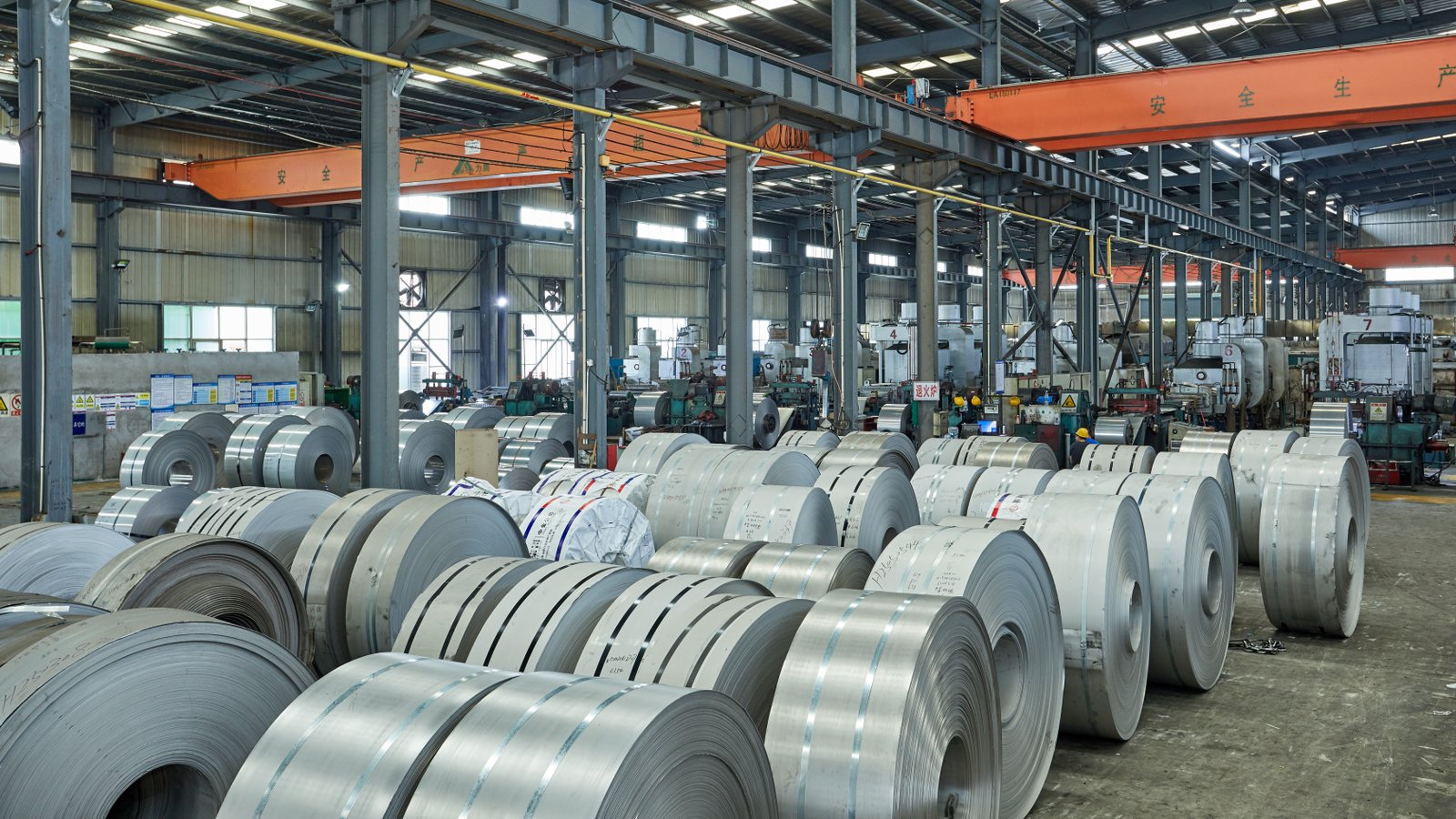
Fostering a Culture of Digital-First R&D
The most critical strategy for maximizing the value of simulation software is a cultural one. The organization, from top leadership to the shop floor, must embrace a "digital-first" mindset. This means shifting the default R&D process from "let's run a test coil" to "let's simulate it first." This requires a conscious effort to champion the technology, communicate its benefits, and integrate it into standard operating procedures for all new product development and process optimization projects.
This cultural shift is underpinned by investment in people. Simply purchasing a software license is not enough; companies must invest in comprehensive training for their engineers and metallurgists. This training should go beyond basic software operation and focus on the underlying physics of heat treatment, enabling users to interpret results critically and build accurate models. Furthermore, it's essential to break down silos between departments. Simulation analysts, process engineers, and furnace operators must collaborate closely. The insights from a simulation are only valuable if they are practical and can be implemented on the production line.
One of our most successful clients, a large stainless steel coil processor in Europe[^12], established a dedicated "Center of Excellence" for thermal processing simulation. This small team became the go-to resource for the entire organization, helping different product teams model their challenges and opportunities. They initiated a policy where no new physical trial could be approved without a simulation report justifying the proposed parameters and predicting the outcome. This mandate, coming directly from senior management, ensured the software was not just an expensive toy but a central pillar of their innovation strategy, driving efficiency and accountability.
The Critical Synergy Between Simulation and Physical Equipment
A simulation is only as good as its ability to predict reality. Therefore, a crucial strategy is to create a tight, synergistic loop between the virtual model and the physical equipment. This begins with the initial validation and calibration of the simulation. When a new furnace, like an AKS bright annealing line, is installed, the commissioning process provides a golden opportunity to gather high-quality data. By placing thermocouples throughout a test coil and carefully logging all process parameters (gas flow, dew point, belt speed), a company can build a highly accurate thermal model—a true digital twin—of its specific production line.
This validated model then serves as a reliable foundation for all future simulations. However, the synergy doesn't stop there. The relationship must be bidirectional. As the simulation software identifies opportunities for optimization—perhaps a more complex cooling profile to enhance material strength—the physical furnace must have the capability to execute that profile precisely. This highlights the importance of investing in modern, high-performance equipment[^13]. A company using a 20-year-old furnace with poor temperature uniformity and manual gas controls will never be able to realize the full potential of advanced simulation software.
At AKS, we recognize this synergy. Our furnaces are designed with the precision control that simulation-driven manufacturing demands. Features like our advanced cooling systems, with their precise airflow control, and our energy-saving combustion systems, which maintain stable gas-to-air ratios, are engineered to execute the complex instructions derived from a simulation. A client in the electronics industry uses simulation to design annealing cycles with extremely tight tolerances for producing thin-gauge stainless steel foil. They explicitly chose our furnace because its documented thermal uniformity and atmospheric stability gave them the confidence that their simulated results could be achieved repeatably in high-volume production.
Leveraging Data for Continuous Model Improvement and AI
The ultimate strategy for maximizing simulation benefits is to treat it as part of a larger data ecosystem. The data generated from every simulation and every physical run—successful or not—is a valuable asset. This data should be systematically collected, organized, and used to continuously refine and improve the accuracy of the simulation models. By comparing predicted outcomes with actual measured results over time, the models become progressively more intelligent and predictive.
This data-driven approach opens the door to leveraging machine learning and artificial intelligence[^14]. An AI algorithm can be trained on historical simulation and production data to identify complex patterns and relationships that even an experienced engineer might miss. For example, an AI could analyze thousands of data points to predict the exact dew point required to achieve a specific level of brightness for a new alloy, based on its precise chemical composition. This moves beyond simple process simulation to true predictive process control.
This forward-thinking strategy transforms simulation from a tool for discrete projects into a learning system that drives continuous improvement across the entire operation. As the database grows, the company's predictive capabilities become a powerful and proprietary competitive advantage. They can develop new products faster, troubleshoot production issues with greater speed and accuracy, and optimize energy consumption and throughput with a level of precision that is impossible to achieve otherwise. This is the future of manufacturing, where data-driven digital design, executed on high-performance physical equipment, creates a cycle of ever-increasing efficiency and innovation.
Simulation requires physical validationTrue
The article emphasizes that simulation models must be validated with physical furnace data to be accurate and useful.
Old furnaces work well with simulationFalse
The text specifically states that 20-year-old furnaces with poor controls cannot realize simulation's full potential.
Conclusion
Embracing bright annealing simulation software is more than a technological upgrade; it's a strategic shift. It shortens R&D cycles, cuts costs, and boosts innovation by replacing physical guesswork with digital precision, creating a powerful synergy between virtual design and high-performance furnace equipment.
